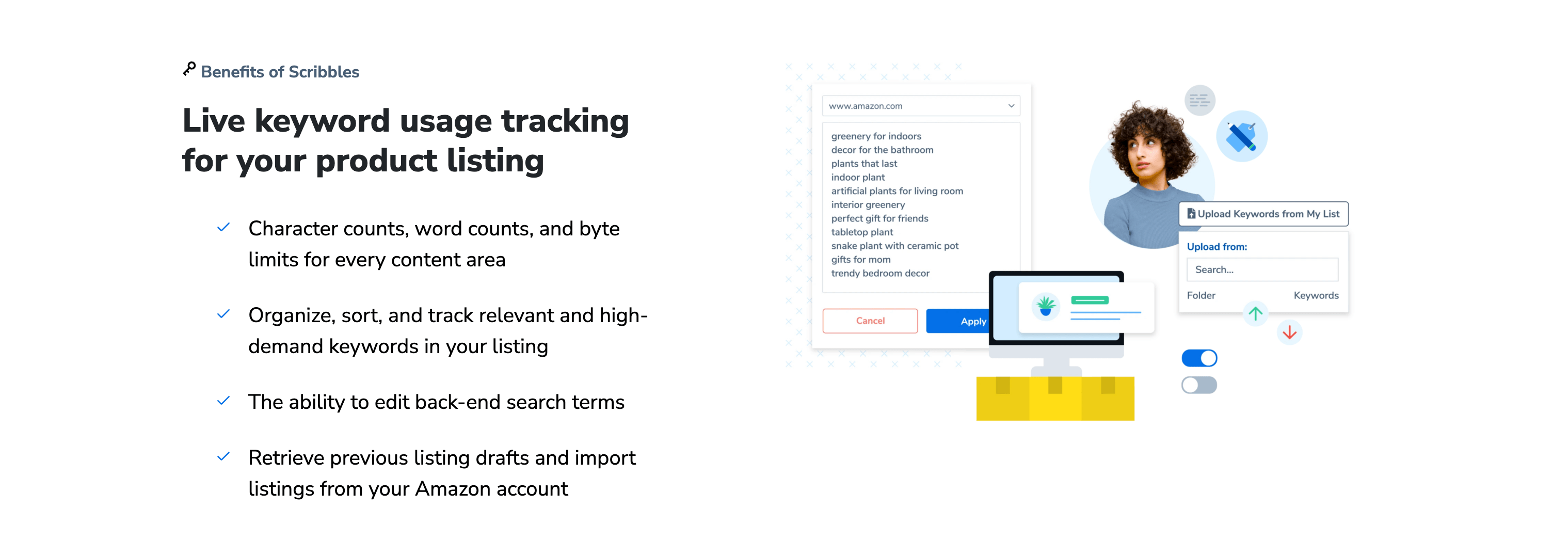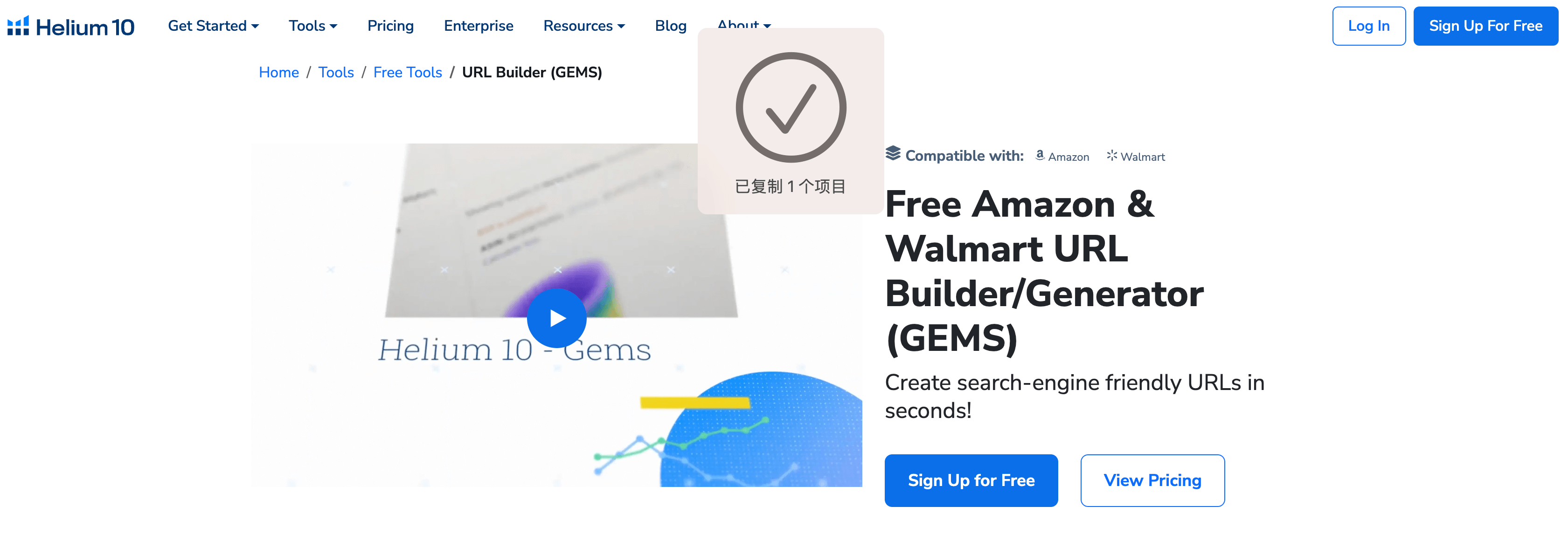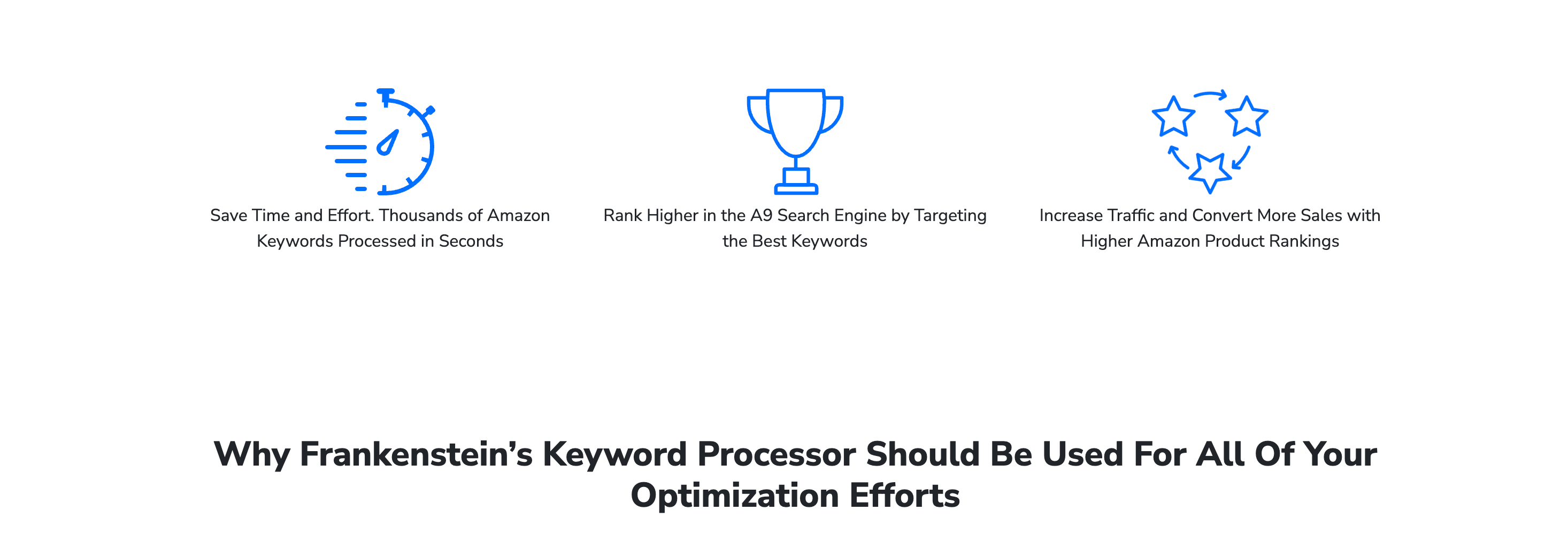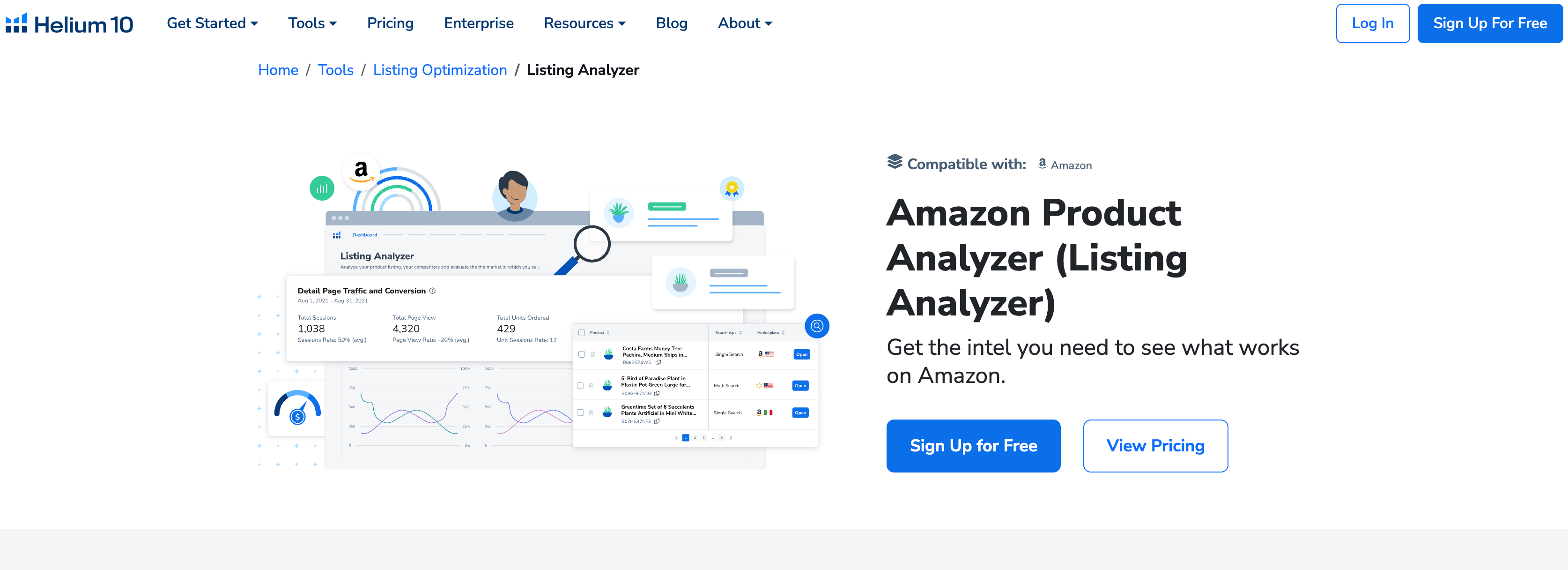How to Spy on Your Amazon Competitors Using Helium 10 Cerebro
In the highly competitive world of Amazon selling, understanding your competitors is key to staying ahead. Competitor analysis allows you to uncover their strategies, identify their top-performing keywords, and discover opportunities to outperform them. Helium 10, a leading software suite for Amazon sellers, offers a powerful tool called Cerebro designed specifically for competitor research. Cerebro enables you to analyze your competitors’ listings, reverse-engineer their keyword strategies, and gain valuable insights to optimize your own listings. This guide will walk you through how to use Helium 10 Cerebro to spy on your Amazon competitors effectively, helping you refine your strategy and dominate your niche. 🕵️♂️
1. Introduction to Helium 10 and Cerebro
Helium 10 is a comprehensive software suite designed to help Amazon sellers optimize their businesses. From product research to keyword tracking and listing optimization, Helium 10 offers a wide range of tools to streamline every aspect of selling on Amazon. One of its standout features is Cerebro, a reverse ASIN lookup tool that allows you to analyze your competitors’ listings in detail. By entering a competitor’s ASIN (Amazon Standard Identification Number), Cerebro provides data on the keywords they rank for, their search volume, and their competitiveness. This information is invaluable for refining your own keyword strategy and improving your listings. With Cerebro, you can gain a competitive edge by understanding what works for your competitors and applying those insights to your own business. 🚀

2. Setting Up Helium 10 Cerebro for Competitor Analysis
Before diving into competitor analysis, it’s essential to set up Helium 10 Cerebro correctly. Start by logging into your Helium 10 account and navigating to the Cerebro tool. Once there, you’ll need to input the ASIN of the competitor’s product you want to analyze. You can find ASINs by visiting the product page on Amazon and locating the unique identifier in the URL or product details. After entering the ASIN, select the marketplace you want to analyze (e.g., Amazon.com, Amazon.co.uk, etc.). Cerebro will then generate a detailed report on the keywords associated with that product. To get the most out of Cerebro, ensure you have a clear goal in mind, such as identifying high-volume keywords or uncovering gaps in your own listings. 🎯
2.1 Finding Competitor ASINs
To analyze competitors, you first need to identify their ASINs. This can be done by searching for products in your niche on Amazon and noting the ASINs of top-performing listings. Tools like Helium 10’s Xray can also help you identify competitors during product research.
2.2 Selecting the Right Marketplace
Amazon operates in multiple marketplaces, and keyword performance can vary significantly between them. Ensure you select the correct marketplace in Cerebro to get accurate data for your target audience.
2.3 Setting Analysis Goals
Before running a Cerebro report, define your objectives. Are you looking for high-volume keywords, low-competition opportunities, or insights into your competitors’ backend keywords? Having a clear goal will help you interpret the data effectively.
2.4 Understanding Cerebro’s Interface
Cerebro’s interface is user-friendly but packed with data. Familiarize yourself with the layout, including the keyword table, search volume metrics, and competitiveness scores. This will help you navigate the tool efficiently.
2.5 Saving and Exporting Reports
Cerebro allows you to save and export reports for future reference. Use this feature to track changes in your competitors’ strategies over time and adjust your approach accordingly.

3. Analyzing Competitor Keywords with Cerebro
Once you’ve set up Cerebro, the next step is to analyze the keywords your competitors are ranking for. Cerebro provides a wealth of data, including search volume, keyword competitiveness, and keyword positions. By examining this data, you can identify high-performing keywords that you may have overlooked and incorporate them into your own listings. Additionally, Cerebro highlights long-tail keywords, which are often less competitive and can drive targeted traffic to your listings. Use this information to refine your keyword strategy and improve your search rankings. 📊
3.1 Identifying High-Volume Keywords
High-volume keywords are those that are searched frequently by Amazon customers. Cerebro ranks these keywords based on their search volume, allowing you to prioritize the most impactful ones for your listings.
3.2 Spotting Low-Competition Keywords
Not all high-volume keywords are highly competitive. Cerebro helps you identify low-competition keywords that can drive traffic without requiring significant resources to rank for.
3.3 Analyzing Long-Tail Keywords
Long-tail keywords are specific phrases that often have lower search volume but higher conversion rates. Cerebro highlights these keywords, enabling you to target niche audiences effectively.
3.4 Understanding Keyword Positions
Cerebro shows you where your competitors rank for specific keywords. Use this information to identify gaps in your own rankings and focus on improving your position for high-priority keywords.
3.5 Monitoring Keyword Trends
Keyword performance can change over time. Use Cerebro to monitor trends and adjust your strategy to capitalize on emerging opportunities or avoid declining keywords.

4. Leveraging Competitor Insights to Optimize Your Listings
The data you gather from Cerebro is only valuable if you apply it to your own listings. Use the insights gained from competitor analysis to optimize your title, bullet points, description, and backend keywords. For example, if you discover that a competitor is ranking well for a specific keyword, consider incorporating it into your listing. Additionally, use Cerebro to identify gaps in your own keyword strategy and address them proactively. By leveraging competitor insights, you can create listings that are more competitive and appealing to your target audience. ✨
4.1 Optimizing Titles
Your product title is one of the most important elements for keyword indexing. Use Cerebro’s data to identify high-priority keywords and incorporate them naturally into your title.
4.2 Enhancing Bullet Points
Bullet points are a great place to include additional keywords and highlight product features. Use Cerebro to identify relevant keywords and integrate them into your bullet points.
4.3 Improving Descriptions
Product descriptions provide an opportunity to include long-tail keywords and detailed information. Use Cerebro’s insights to craft descriptions that are both informative and optimized for search.
4.4 Updating Backend Keywords
Backend keywords are hidden from customers but are indexed by Amazon’s search algorithm. Use Cerebro to identify gaps in your backend keywords and fill them with relevant terms.
4.5 A/B Testing Changes
After making optimizations, use A/B testing to measure their impact on your rankings and conversion rates. This will help you refine your strategy further.

5. Monitoring Competitor Strategies Over Time
Competitor analysis is not a one-time task; it’s an ongoing process. Use Cerebro to monitor your competitors’ strategies over time and stay ahead of changes in their approach. For example, if a competitor starts ranking for a new keyword, consider whether it’s relevant to your listings and adjust your strategy accordingly. By staying vigilant and proactive, you can maintain a competitive edge in your niche. 🕵️♀️
5.1 Tracking Keyword Performance
Regularly use Cerebro to track how your competitors’ keyword rankings change over time. This will help you identify emerging trends and adjust your strategy accordingly.
5.2 Identifying New Competitors
New competitors can enter your niche at any time. Use Cerebro to identify these competitors and analyze their strategies to stay ahead.
5.3 Adapting to Algorithm Changes
Amazon’s search algorithm is constantly evolving. Use Cerebro to monitor how these changes impact your competitors’ rankings and adjust your strategy to align with the latest best practices.
5.4 Benchmarking Your Performance
Use Cerebro to benchmark your keyword rankings against your competitors. This will help you identify areas where you’re underperforming and focus your efforts on improvement.
5.5 Staying Proactive
Competitor analysis is most effective when it’s proactive rather than reactive. Regularly use Cerebro to stay informed about your competitors’ strategies and make adjustments before they gain an advantage.

6. Combining Cerebro with Other Helium 10 Tools
While Cerebro is a powerful tool on its own, it’s even more effective when combined with other Helium 10 features. For example, use Magnet to discover new keywords and Scribbles to organize and implement them in your listings. Additionally, Listing Analyzer can help you evaluate the overall health of your listings and identify areas for improvement. By integrating Cerebro with other Helium 10 tools, you can create a comprehensive strategy that maximizes your chances of success on Amazon. 🛠️
6.1 Using Magnet for Keyword Discovery
Magnet helps you discover new keywords based on seed terms. Combine this with Cerebro’s competitor data to create a robust keyword strategy.
6.2 Organizing Keywords with Scribbles
Scribbles allows you to organize and prioritize keywords for your listings. Use this tool to implement the insights gained from Cerebro effectively.
6.3 Evaluating Listings with Listing Analyzer
Listing Analyzer provides a comprehensive evaluation of your listings. Use it to identify areas for improvement and ensure your listings are fully optimized.
6.4 Tracking Performance with Alerts
Helium 10’s Alerts feature notifies you of changes in your rankings or competitors’ strategies. Use this to stay informed and respond quickly to new developments.
6.5 Integrating Data Across Tools
The true power of Helium 10 lies in its integration. Combine data from Cerebro, Magnet, Scribbles, and other tools to create a cohesive and effective strategy.

7. Common Mistakes to Avoid When Using Cerebro
While Cerebro is an invaluable tool, it’s important to use it correctly to avoid common pitfalls. For example, don’t focus solely on high-volume keywords without considering their competitiveness. Additionally, avoid overloading your listings with keywords, as this can lead to poor readability and lower conversion rates. Finally, don’t rely on Cerebro in isolation; combine it with other Helium 10 tools and your own market research for the best results. 🚫
7.1 Ignoring Competitiveness
High-volume keywords are attractive, but they’re often highly competitive. Use Cerebro’s competitiveness scores to identify keywords that offer a balance of volume and feasibility.
7.2 Overloading Listings with Keywords
While keyword optimization is important, overloading your listings with keywords can make them difficult to read. Use Cerebro’s data to incorporate keywords naturally and maintain readability.
7.3 Neglecting Long-Tail Keywords
Long-tail keywords may have lower search volume, but they often have higher conversion rates. Use Cerebro to identify and target these keywords effectively.
7.4 Failing to Monitor Trends
Keyword performance can change over time. Use Cerebro to monitor trends and adjust your strategy to stay relevant.
7.5 Relying Solely on Cerebro
Cerebro is a powerful tool, but it’s most effective when used in conjunction with other Helium 10 features and your own market research. Avoid relying on it in isolation.

8. Conclusion: Mastering Competitor Analysis with Helium 10 Cerebro
In the competitive world of Amazon selling, competitor analysis is essential for success. Helium 10’s Cerebro provides a powerful platform for uncovering your competitors’ strategies, identifying high-performing keywords, and optimizing your listings for maximum visibility and sales. By following the steps outlined in this guide, you can use Cerebro to gain a competitive edge, refine your keyword strategy, and dominate your niche. Remember, competitor analysis is an ongoing process, so stay proactive and continue leveraging Cerebro’s insights to stay ahead of the competition. 🏆
8.1 Recap of Key Steps
To master competitor analysis with Cerebro, follow these steps: set up the tool, analyze competitor keywords, leverage insights to optimize your listings, monitor competitors over time, and integrate Cerebro with other Helium 10 tools.
8.2 The Importance of Ongoing Analysis
Competitor analysis is not a one-time task. Regularly use Cerebro to stay informed about your competitors’ strategies and adjust your approach accordingly.
8.3 Leveraging Helium 10’s Full Suite
Cerebro is most effective when used in conjunction with other Helium 10 tools. Combine its insights with Magnet, Scribbles, and Listing Analyzer for a comprehensive strategy.
8.4 Avoiding Common Pitfalls
Be mindful of common mistakes, such as overloading listings with keywords or neglecting long-tail keywords. Use Cerebro’s data thoughtfully to maximize its impact.
8.5 Taking Action
The insights gained from Cerebro are only valuable if you act on them. Use the tool’s data to refine your listings, improve your rankings, and drive more sales.
By mastering Helium 10 Cerebro, you can unlock the full potential of competitor analysis and take your Amazon business to new heights. Happy selling! 🚀


Comments